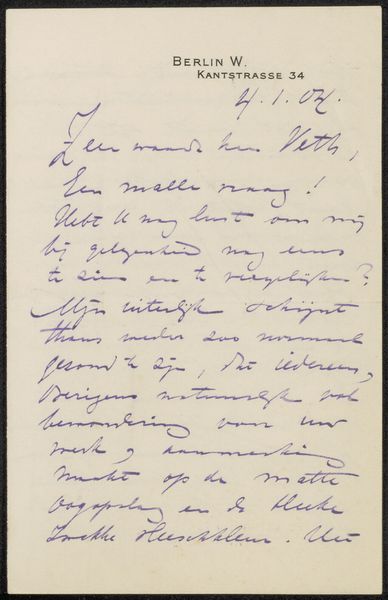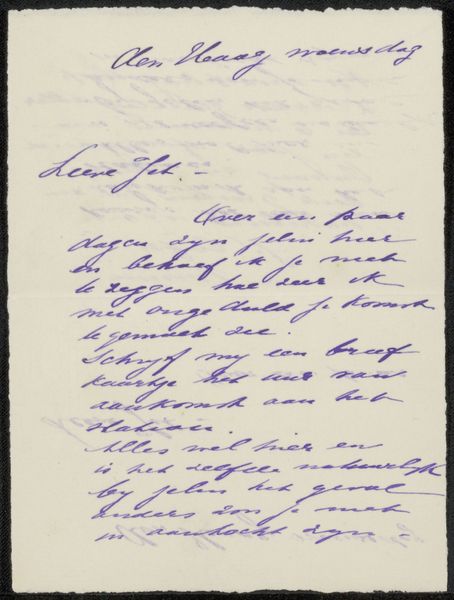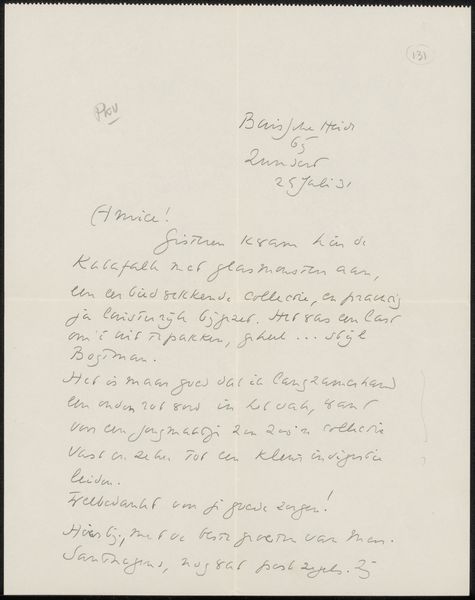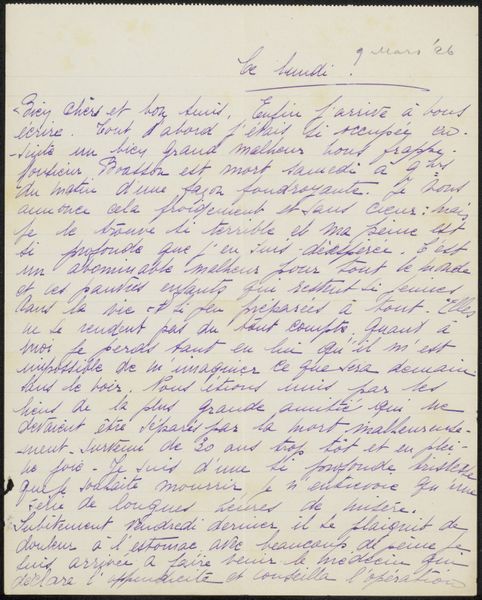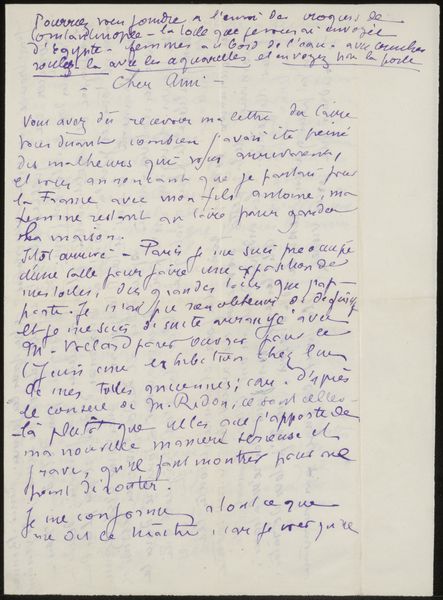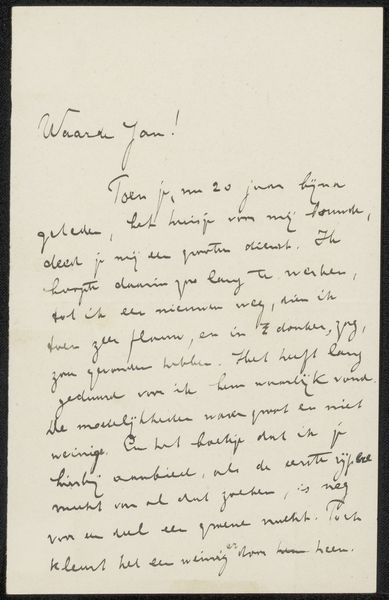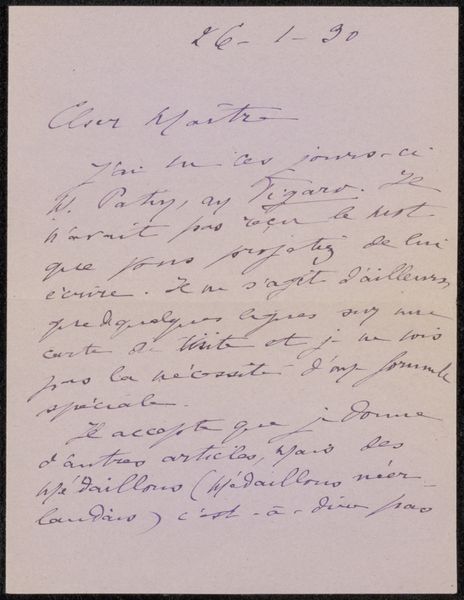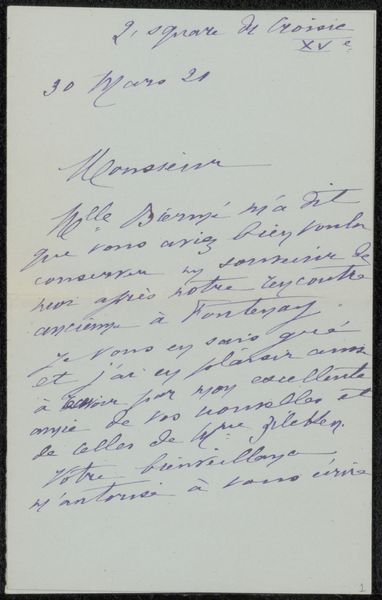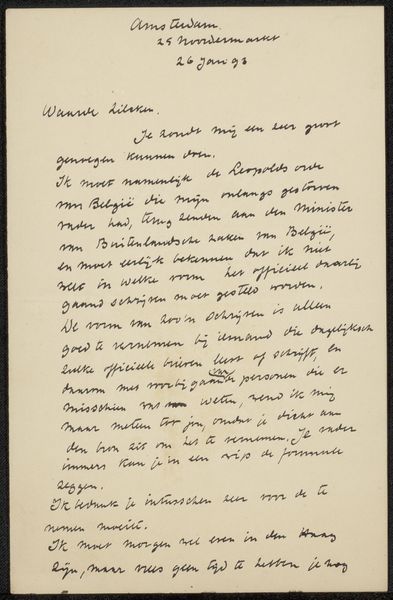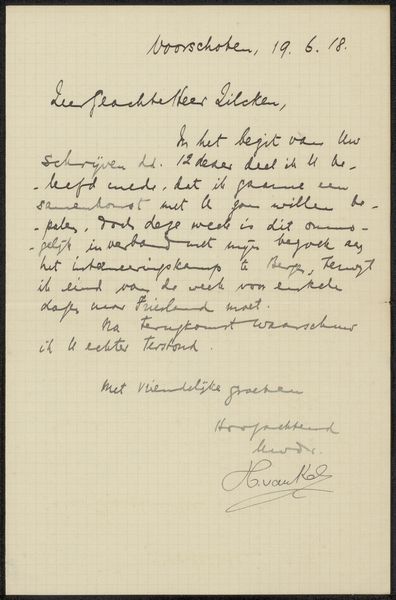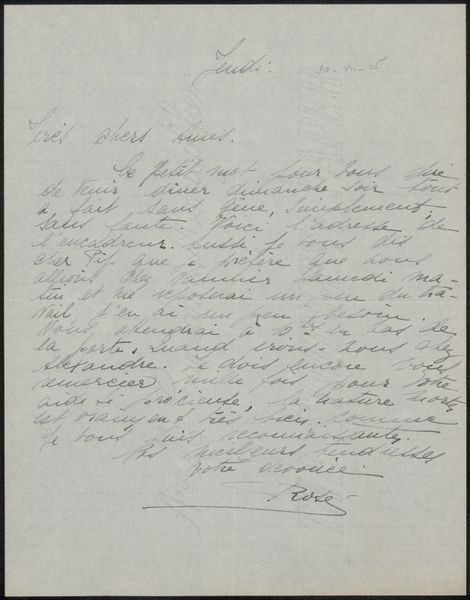
drawing, paper, ink, pen
#
drawing
#
ink drawing
#
pen drawing
#
paper
#
ink
#
pen
Copyright: Rijks Museum: Open Domain
Curator: This intriguing item is titled "Brief aan Jan Veth," possibly dating from 1904 to 1917, created by Wally Moes. It's a pen and ink drawing on paper. Editor: My immediate reaction is to the intimacy of it. A handwritten letter; you feel as though you're intruding on a private communication. The blue ink gives it a melancholic, reflective air. Curator: Absolutely. The letter itself, addressed to Jan Veth, connects Moes to a significant figure in the Dutch art world. Veth was an artist, critic, and a key figure in the cultural debates of the time, very focused on the social function of the arts. Receiving a handwritten letter positions you directly into that world. Editor: I’m drawn to the materiality here. It is an unassuming piece of paper and relatively basic writing tool, yet there’s inherent skill. The uniformity and tight kerning of the script suggest careful craftsmanship, challenging any separation of functional script and high art. Curator: Indeed. And context is important. Considering Moes' position as a woman artist during that era, letter-writing held an important public, yet private, space for networking. Her correspondence reveals aspects about her art that were very tied to her access to patronage. Editor: Did these missives contain images of any sort? Because this may well have been a quick yet detailed sketch, using a familiar material that provided direct communication, much like the social media feeds artists use today to get quick images and details to an audience. Curator: It’s plausible. She was working in an artistic milieu in which the meaning and the modes of art and communicating its themes were in transition, and Moes’s involvement shows a keen sensibility toward where it was headed. It is a way of taking care of a fellow artist by literally keeping in touch. Editor: Exactly, and those artistic roots that were so embedded in material are even more intriguing than I first thought. It’s exciting how an immediate message carries lasting clues, revealing this woman's engagement and position within the politics of making. Curator: Yes, it’s far more than just a note; it reveals something about community and belonging within art's institutions and challenges of the time.
Comments
No comments
Be the first to comment and join the conversation on the ultimate creative platform.
